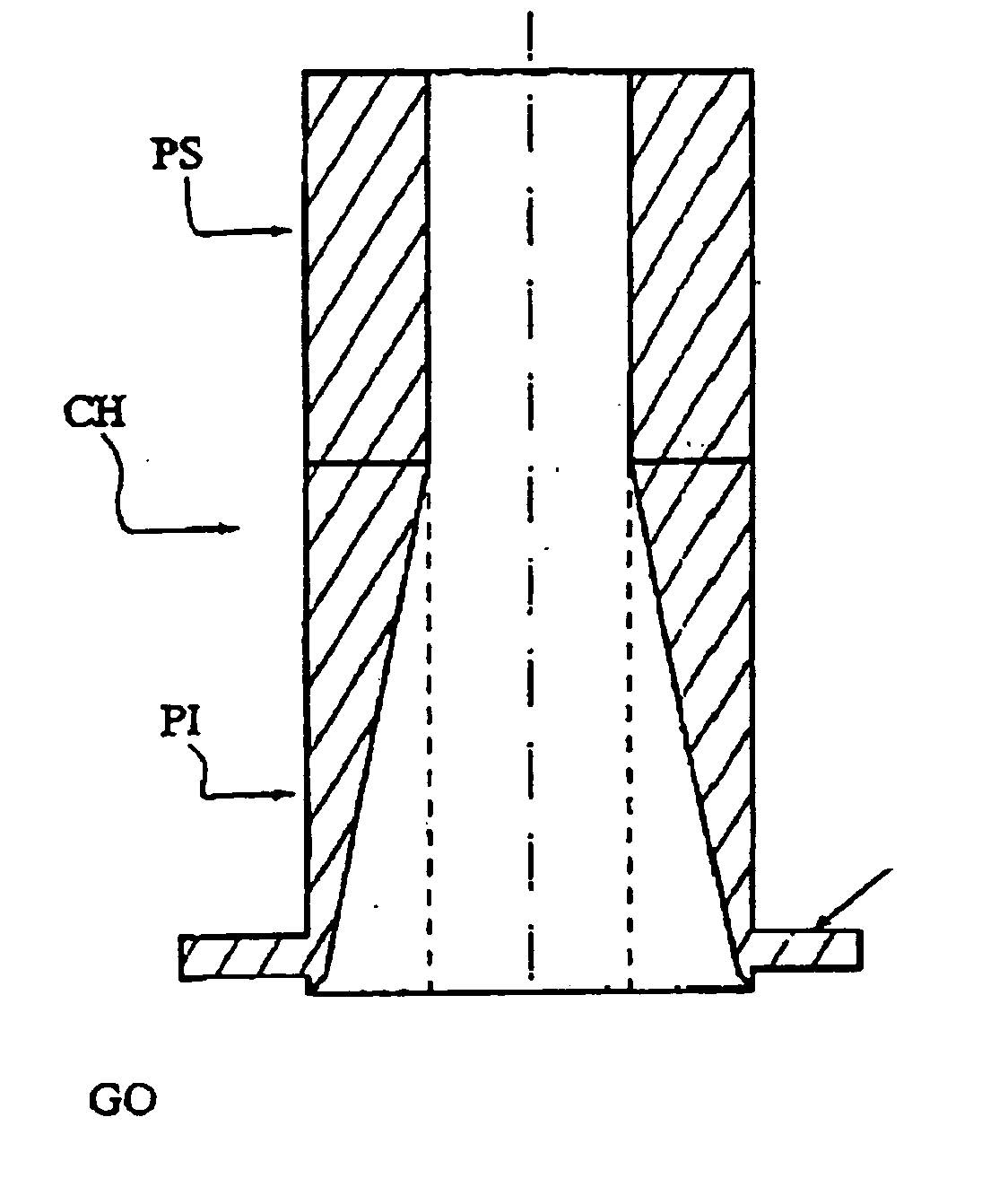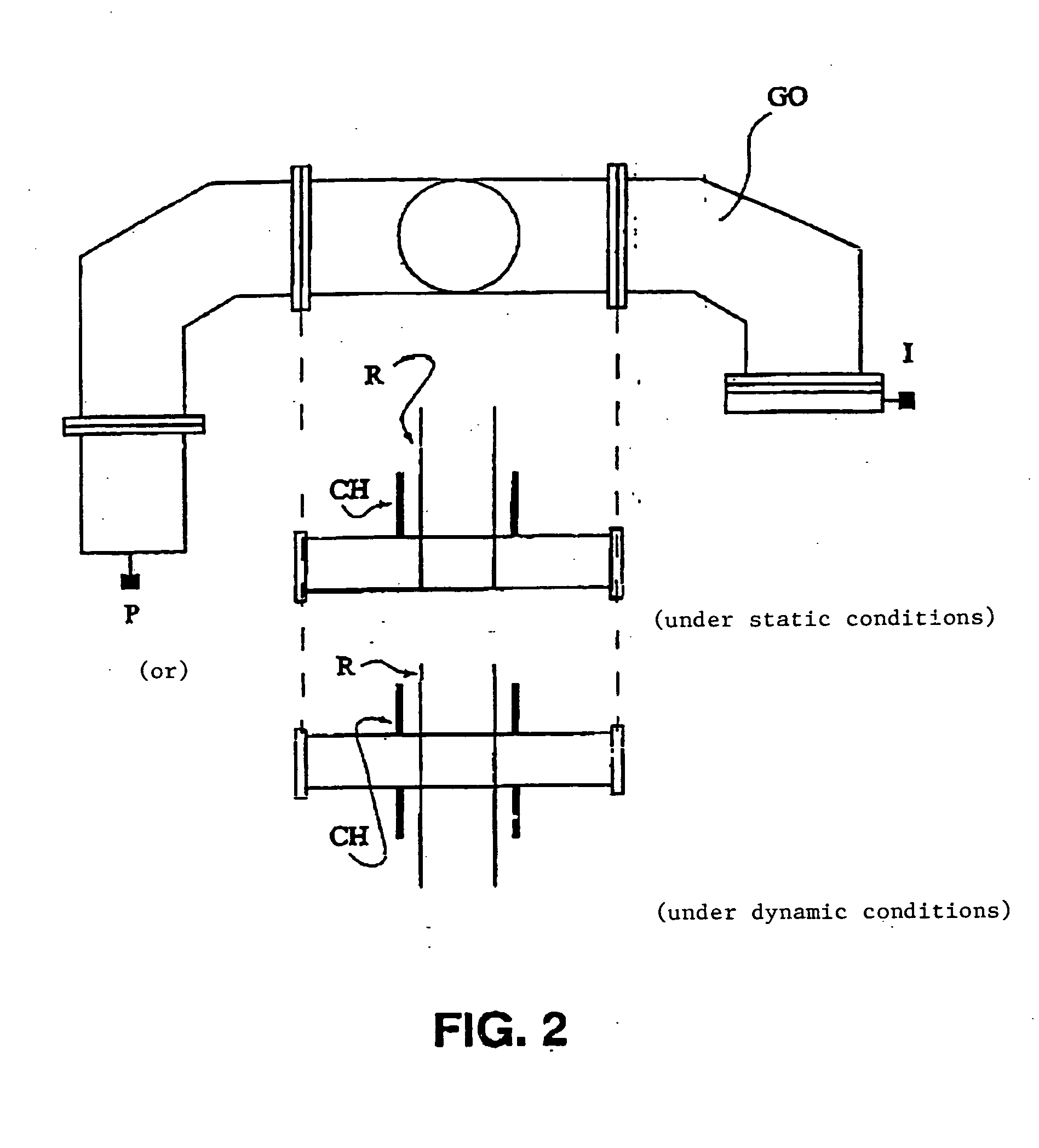Energy applicators adapted to dielectric heating
- Summary
- Abstract
- Description
- Claims
- Application Information
AI Technical Summary
Benefits of technology
Problems solved by technology
Method used
Image
Examples
examples
The examples below illustrate the interest of the invention as well as of its variants, and will permit the person skilled in the art easily to extrapolate to other dimensions and / or geometries without departing from the scope of the invention.
The following examples, which are in no way limitative, illustrate the merit of the invention. They are intended to demonstrate that the usual microwave and high-frequency applicators are not adapted to all products, and more particularly to weakly absorbing products. To be able to heat these products without risk of discharge, it is advisable to modify the shape of the chimney member of these applicators.
The examples also demonstrate the successive difficulties encountered in the development of the present invention.
I—Appliances Used
The microwave device comprises different elements:
(see FIG. 1)
The microwave system is composed of a magnetron generator G operating at the frequency of 2450 MHz (λ=12 cm) at a power ranging up to 6 kW...
PUM
 Login to View More
Login to View More Abstract
Description
Claims
Application Information
 Login to View More
Login to View More - R&D
- Intellectual Property
- Life Sciences
- Materials
- Tech Scout
- Unparalleled Data Quality
- Higher Quality Content
- 60% Fewer Hallucinations
Browse by: Latest US Patents, China's latest patents, Technical Efficacy Thesaurus, Application Domain, Technology Topic, Popular Technical Reports.
© 2025 PatSnap. All rights reserved.Legal|Privacy policy|Modern Slavery Act Transparency Statement|Sitemap|About US| Contact US: help@patsnap.com



